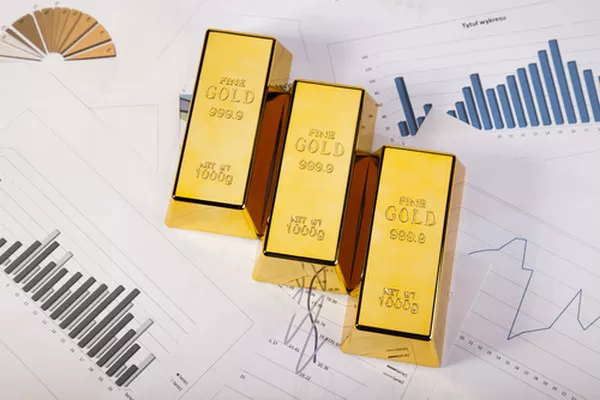Gold, often considered a safe-haven asset and a store of value, has historically played a crucial role in investment portfolios. However, recent market trends have witnessed a decline in the price of gold, raising questions about the factors influencing this downward movement. In this comprehensive article, we will delve into the various economic, geopolitical, and market-related factors that have contributed to the decrease in gold prices, providing a deeper understanding of the situation.
Strengthening Economic Outlook
One significant factor contributing to the decline in gold prices is the overall improvement in the global economic outlook. As economies recover from the impact of the COVID-19 pandemic, investors’ appetite for riskier assets increases. Stocks and commodities tied to economic growth become more attractive, leading to a decrease in demand for safe-haven assets like gold. Consequently, this shift in investor sentiment exerts downward pressure on gold prices.
The prospect of robust economic growth, fueled by stimulus measures, increased consumer spending, and positive business sentiments, often diminishes the allure of gold. Investors seek assets that offer higher potential returns, such as equities, which can outperform gold during periods of economic expansion.
Rising Interest Rates
Gold, as a non-yielding asset, tends to be negatively affected by rising interest rates. When central banks increase interest rates to combat inflation or normalize monetary policy, it makes fixed-income investments more attractive. This shift in preferences reduces the relative appeal of gold, as it does not generate income or yield. Consequently, higher interest rates can lead to a decrease in demand for gold and put downward pressure on its price.
Moreover, higher interest rates can strengthen the domestic currency, making gold relatively more expensive for international buyers. This can further reduce the demand for gold and contribute to its declining price.
U.S. Dollar Strength
Gold is often inversely correlated with the U.S. dollar. When the value of the U.S. dollar strengthens, it tends to put downward pressure on gold prices. As the U.S. dollar gains strength, gold becomes relatively more expensive for investors using other currencies. Consequently, the demand for gold decreases, leading to a decline in prices.
Several factors can influence the strength of the U.S. dollar, including better economic performance compared to other regions, higher interest rate expectations, and capital flows seeking higher returns in the United States. These factors collectively contribute to the decline in gold prices.
Reduced Geopolitical Tensions
Gold is also influenced by geopolitical factors and acts as a hedge against political and economic uncertainties. In times of geopolitical tensions or global instability, investors tend to flock to gold as a safe-haven asset. The increased demand during such periods can drive up gold prices. Conversely, periods of relative calm and reduced geopolitical risks can lead to a decrease in demand for gold, resulting in lower prices.
Recent easing of tensions between major global powers, diplomatic breakthroughs, and improved geopolitical stability have diminished the perceived need for gold as a safe-haven asset. As a result, investors have been less inclined to allocate their funds into gold, contributing to its decline in price.
Market Sentiment and Investor Behavior
The sentiment and behavior of market participants play a significant role in shaping gold prices. Investor preference for riskier assets, such as equities, cryptocurrencies, or real estate, can divert capital away from gold. During periods of positive market sentiment, where economic indicators are strong, and risk appetite is high, investors seek assets that offer greater growth potential and higher returns.
Additionally, increased participation in speculative trading, market trends favoring short-term gains, and the prevalence of algorithmic trading can lead to heightened price volatility and short-term price declines in gold. The influence of these market dynamics can contribute to the decline in gold prices, particularly during periods of elevated market speculation.
Exchange-Traded Funds (ETFs) and Investment Flows
Gold-backed exchange-traded funds (ETFs) have become a popular investment vehicle for gaining exposure to gold. Fluctuations in investment flows into or out of gold ETFs can impact gold prices. When investors redeem their holdings in gold ETFs, it can result in selling pressure on the underlying gold assets, leading to a decline in prices.
In recent times, there has been a trend of reduced inflows into gold ETFs. This decline in investor interest can be attributed to a combination of factors, including the aforementioned strengthening economic outlook, rising interest rates, and the lure of alternative investment opportunities. As the demand for gold through ETFs diminishes, it exerts downward pressure on its price.
Conclusion
The decline in gold prices is influenced by a confluence of factors, including a strengthening economic outlook, rising interest rates, U.S. dollar strength, reduced geopolitical tensions, market sentiment, and investment flows. Understanding these multifaceted influences and their interplay is essential for investors and traders seeking to navigate the gold market effectively.
While gold’s decline may be a temporary phenomenon influenced by market dynamics, it is crucial to continually monitor the evolving landscape to make informed investment decisions. As economic and geopolitical conditions evolve, the price of gold may respond accordingly. Therefore, investors should stay abreast of the latest developments and conduct thorough analysis before making investment choices involving gold.


